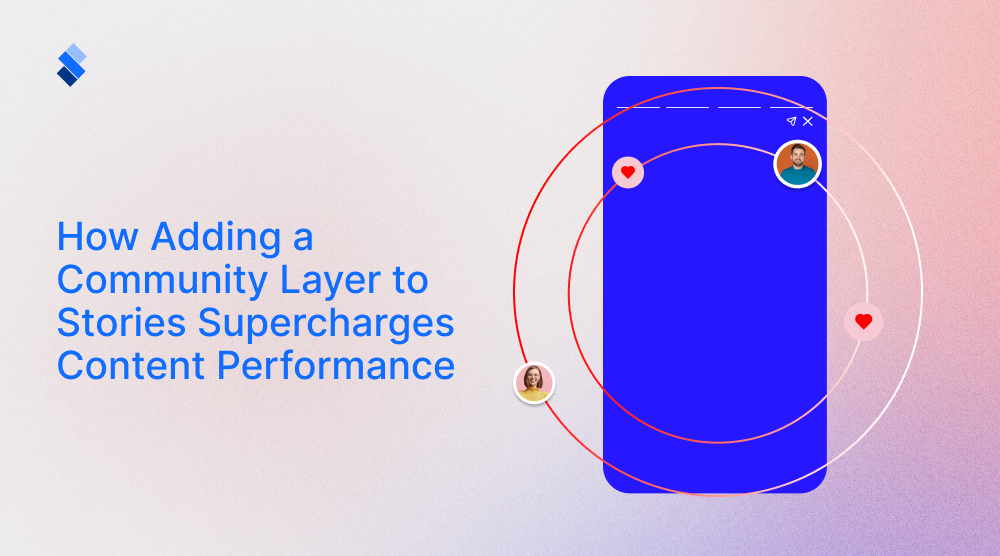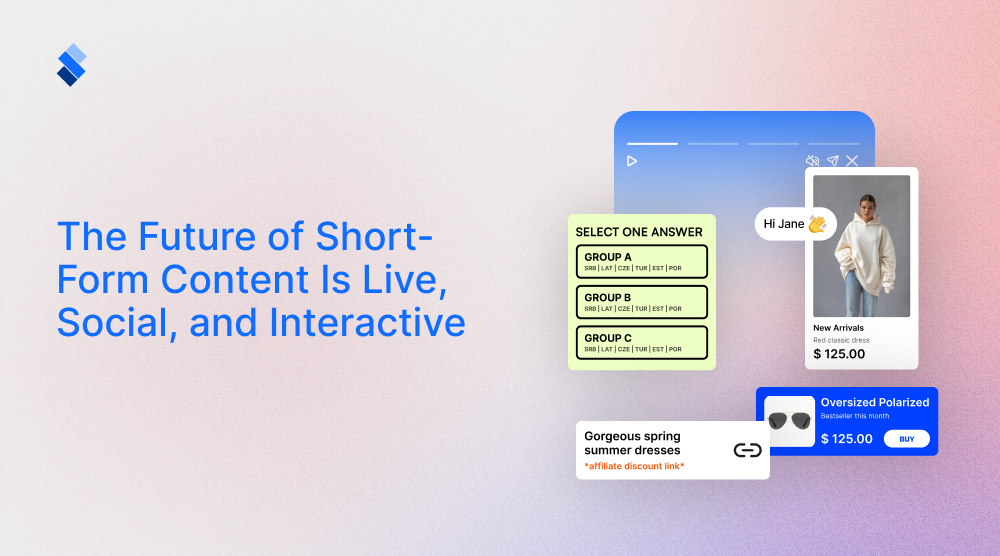Building customer journey through gamification
Once you understand the basics of building a customer journey through gamification you will no longer have to worry about customer engagement.
.jpg)
Company managers often struggle with building an engaging customer journey. Whether they wish to design an app or build a website, the difficulty of guiding a customer through your content is always present. Especially if the customer is a newcomer, and they have little to no idea of your brand and why they should do business with you. Well, fortunately, there are some tried and true ways in which you can present information to your customer in an engaging way and successfully guide their attention to conversion. In this article, we will explore building customer journey through gamification and how it can help your brand.
What is gamification
People that are new to UX development might not be aware of what gamification is. Well, in simplest terms, gamification is the practice of using concepts from video games to improve apps, websites and various software. The idea is to make use of the wealth of knowledge that video games have regarding human attention, our experience while interacting with virtual content, and our motivation to learn. When used properly, gamification does wonders as it makes the process of learning and interacting with content enjoyable. But, using gamification for app and web development is easier said than done.
Why is gamification useful
The main crux of gamification is that you are using tried and true tactics that video games have developed over the past decades. Modern games are incredibly fun, and even often addictive. And to make them so, gaming companies combined psychological data with software design. The effect is evident, as video games are one of the biggest industries in the modern economy. And the companies that used gamification to their advantage, soon realized how valuable that psychological data was.

Keep in mind that when we talk about gamification we don't mean the superficial aspects of video games. Yes, the shiny colours, the smooth animations and carefully crafted sounds do play a role. But, it is the under-the-hood systems that you need to pay attention to. What will help you improve your customer journey aren't shades of colour or smooth animations. Instead, it is your ability to understand and guide the customer's attention through your content. And your ability to weave conversion points into your content at the right time.
Building customer journey
The process of building a customer journey through gamification isn't something you tackle in one go. While planning is important, what is more, important is that you come to terms with the fact that building a customer journey takes time. No matter how thought out your plan is, you will still have to experiment and make changes based on those experiments. This is why it is paramount that you set up tools for monitoring customer journeys before you start applying gamification. Tools like:
- Google Analytics
- Zendesk
- Hotjar
- Mixpanel
These are just some of many that can aid you in building a customer journey. So, make sure that you get the right analytic tools before you start any experimentation. That is the only way to actually learn from prior mistakes.
Gather customer data
Another thing to do before, and throughout the gamification process is to gather customer data. Namely, you cannot simply optimize your website or app to cater to some imaginary customer. Instead, you need to understand who your customers are, and what their online behaviour is like. Different demographics have different preferences. And the sooner you are aware of those preferences, the sooner you can use them to craft a top-notch customer experience. Even outside gamification, using customer data is a must. After all, personalized marketing content is slowly becoming the norm. And you'll have a hard time engaging modern customers with emails if you don't create them with customer data in mind.
Understand what customers need to learn
Whether you are using an app or a website, the goal of your content is to teach your customers something related to your brand. For instance, let's say that you run a website that sells sports goods. The content that you put should serve to either:
- Educate customers about products - Materials used, country of origin, how to maintain them, etc.
- Educate customers about certain aspects of physical exercises - Blog posts about diets, new exercise trends or sports events.
- Inform them about a certain aspect of your company - Ongoing discounts, how to order items, how and why to become a premium member.
Each bit of content has (or at least should have) some information that is relevant to the customer. And if you wish to apply gamification to your online store, you need to understand what that information is, and how to present it so that your customers will understand.

Information pacing
What you want to avoid is plastering your customers with too much information. In video game design, this is called an information wall. What it means is that you have a situation where a customer needs to learn a ton of information in order to proceed with what they want to do.
This information wall is a common quit moment for customers and gamers alike. So, instead, make sure that you pace out the information you are trying to present. If the customer wishes to learn more about the product, present the info in bite-sized pieces that they will easily understand. If you are educating them about physical exercise, make sure that you start with simple aspects and slowly progress to more complex ones. Finally, if they wish to do business with your company, make sure that you easily bring them to the selling point, and not demand a ton of data at once.
Incentivize learning
The true beauty of games is that they incentivize you to learn. You'd be surprised at how complex certain video games can be, and how willing people are to learn as much as possible about them. The more they learn about a game, the more closely they feel towards it. So, why not use this true beauty of video games to help improve the customer journey. The idea here is to give clear incentives to your customers to learn as much as possible.
Let's stick to the sports goods shop example. Instead of simply mentioning materials, you can also give hints as to why certain materials are better in certain situations. All materials, be it for sports clothing, or exercise equipment, have pros and cons. And those pros and cons usually dictate their price. So why not present your customer with the relevant info while they are on your website.
Once you explain the nature of the materials, you can look to stick with the subject, and explain how and why to maintain certain materials. Or, you can look to elaborate further on the products in question and outline how they are best used. Here you can postulate recommended exercise routines, proper forms, and workout programs. The more your customer gains from digging deeper into your website, the more reward they should feel. What's important here is to prioritize the content quality of quantity, and to take good care of information pacing.
Using visual content
It should come as little surprise that written content isn't the best-performing content out there. Especially when you need to capture and maintain the attention of your customers. A good rule of thumb is to only use written content when there is no alternative. Content that is visually rich is bound to grab and maintain the attention of your customers with far greater ease. As such, it is perfectly suited for gamification of the customer journey.

Visual content, by its very design, doesn't allow you to create information walls. Instead, you need to carefully consider what you want to say, and then outline that information in a visual format. This content can be:
- Videos - both live and animated.
- Web stories for websites and apps.
- Comics
- Informative images.
There are others, but these tend to be most widely used in modern onboarding and marketing. The key thing to remember about visual content is that it needs to be closely integrated with branding. With proper branding, your visual content will shine. Add some well-placed interactive elements, and you will have a top-notch gamified website.
Introducing reward system
One of the things that video game designers noticed is that people like getting rewards for their effort. In the case of games, this comes as small token rewards for loyalty, achievements or regular use. And these token rewards, while seemingly insignificant, bring a sudden dopamine rush that users can't help but enjoy. So, why not use the benefits of the reward system to help gamify your website/app.

Again, let's use the case of an online store for sports goods. You can have loyalty discounts for returning buyers to show your appreciation. When a person thoroughly researches something about a product, you can reward them with an achievement badge. If they respond regularly to your content, they can get a different badge. All in all, you want to reward the behaviour that helps your company grow, and helps you learn about your customers. So, while all shops should incentivise their customers to make accounts, don't stop just there. Make their accounts meaningfully by providing achievements and rewards that other users can see and appreciate.
Conclusion
Depending on what your website/app is like, there can be different ways of building a customer journey through gamification. What's important is that you understand the deeper mechanics of gamification and how they translate into the website/app sphere. If you do decide to gamify, know that you won't do it one go. Instead, try to outline different gamification options and focus on those that work well for your brand, and for your customer base. Through some trial and error, you are bound to find ways to bring the customer journey to a new level.







